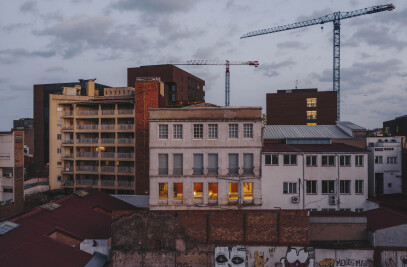Shade becomes shelter. …And atthe appropriate place, builds up coexistence between individuals.
A couple, a traditional house in the Empordà and one dream. Houses should evolve along with its user. Ana María and Manuel, our clients, made the decision of spending as much time as possible in their summerhouse in Sant Mori. Located between Figueres and Girona, Sant Mori is a rural village with irregular geometry, which offers a characteristic Mediterranean landscape scenery to its inhabitants, bounded by long fields andforests.
The Blasco-Nicolau family was already using the house regularly during the hottest months of the year and therefore, the swimming pool has always been an important feature to their summer lifestyle. Nevertheless, its use was mainly focused on the water area, as the adjacent space was not comfortable despite its appeal.
The idea was to bring back the space’s vitality with the purpose of making it the house’s exterior heart: a meeting point, an exterior room for the family. A place under a canopy’s shade, where three generations would coexist, chat and share moments. The pool area used to be a place of joy and gathering point during summer holidays. Due to time and low maintenance, it ended up being a cold, uncomfortable and neglected place. Lying under the sun is one of the pleasures of open spaces and a canopy is a haven of shade if you want to rest from the sun.)
Facing east, the swimming pool was surrounded, on two of its sides, by the main facade and the neighbour’s party wall, presented in a very harsh and cold way.On the contrary, the remaining sides were surrounded by vegetation with views towards Sant Mori’s meadows and forests. The answer was clear: To generate a new facade with dominant horizontality leaning on to the existent dividingparty wall in order to bring a sense of unity to the space.
Once again, the project’s challenge was how to achieve all the objectives using all resources given reducing the visual impact as much as possible. The functional necessity to build a large shed with a facade onto the enclosure should not become an obstacle but one of the defining elements of the project’s strategy. Even to reuse some extra floor tiles from a previous project fulfilled by the owners should be a statement to sum up and not to be hidden.Minimum investment in all resources, maximum transformation in the spaces revitalization.A contained architecture for an intense lifestyle.
The existing piece from where the project starts (50x50 cm, with open joints)helps to organize the project’s development, creating a very structured grid from which the whole intervention will intentionally try to follow by aligning and following the module. The noblest areas, such as the solarium and the living room, create a contrast with the solid wooden pavement, which gives the necessary warmth to the place.
Canopy and shed share the same roof layer: a single element, working harmoniously and resting on a concrete wall. Shaped by two metal beams, the structure follows the project’s key principle: the 8mx2m shed formed by UPN-240 and the 12,5mx3m canopy formed by UPN-300 are linked from one of the sides by a UPN-200. This connecting line is in charge of assuming everything the project demands: a subtle edge yet complex beam (formed with three profiles that help to reduce the point),collects the sliding doorsthat compose the facade of the store from the lower edge and produces the rain watercollection spout in the upper profile. One single element yet three accomplished objectives. A sequence of flawless changing shadows isprojected on the floor’s surface by the lightest beams representing time.
Proposal of minimum intervention: A simple horizontal element, which generates shade, dramatically transforms the interior/exterior perception. It is not under the sunrays where architecture is experienced, but under the shade’s shelter. Nor walls or openings are barriers but a subtle and vibrant border created by its projected shadows.
The project Blasco-Nicolau is an example of Measure; of how, from a small intervention it is possible to generate an enormous impact on architecture’s use and enjoyment. An effort to reduce what is strictly functional and structural to achieve the highest quality of the space. The smart use of all available materials as well as the way in which they are carefully set, allows for an intense transformation, but yet calm and sober.

































